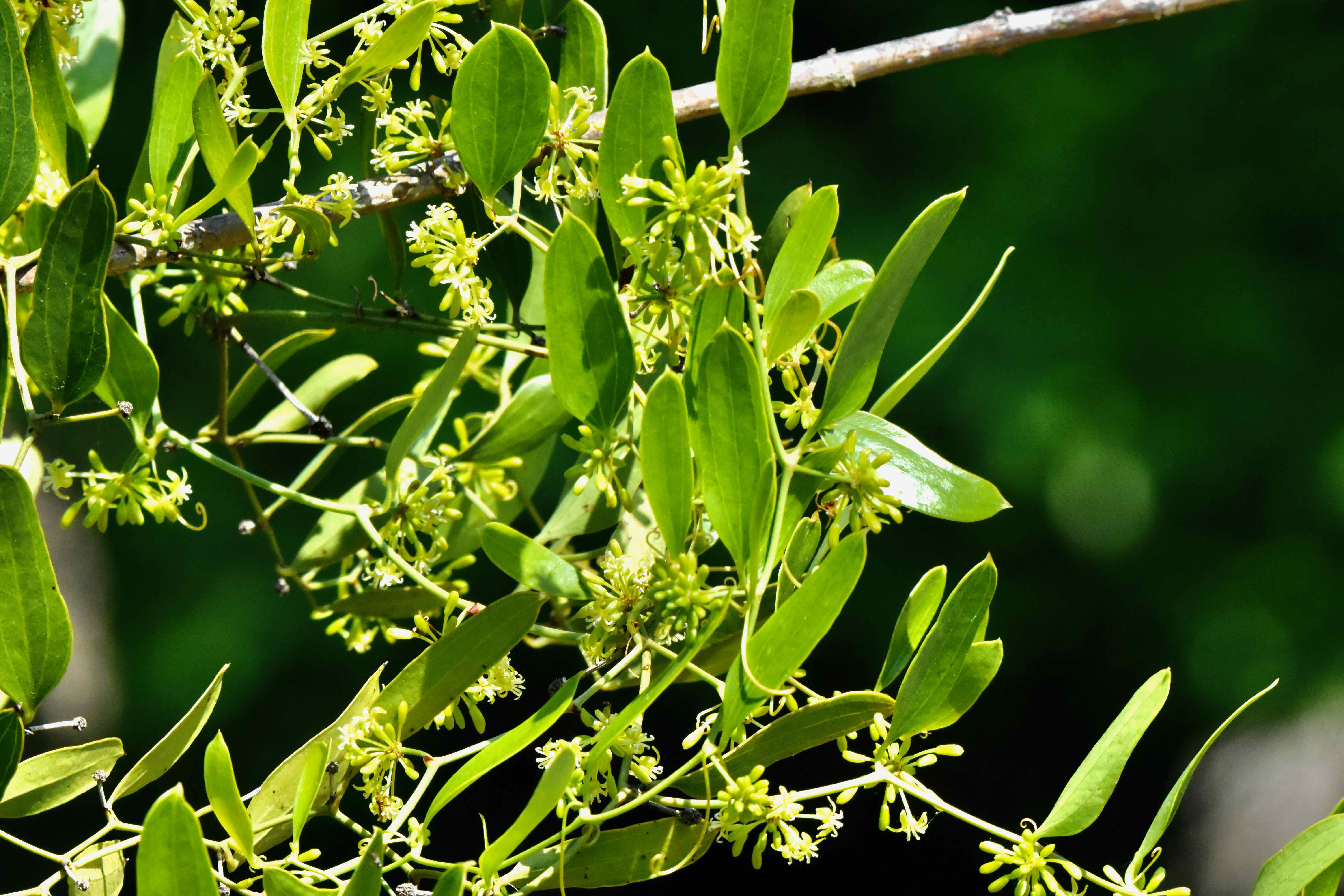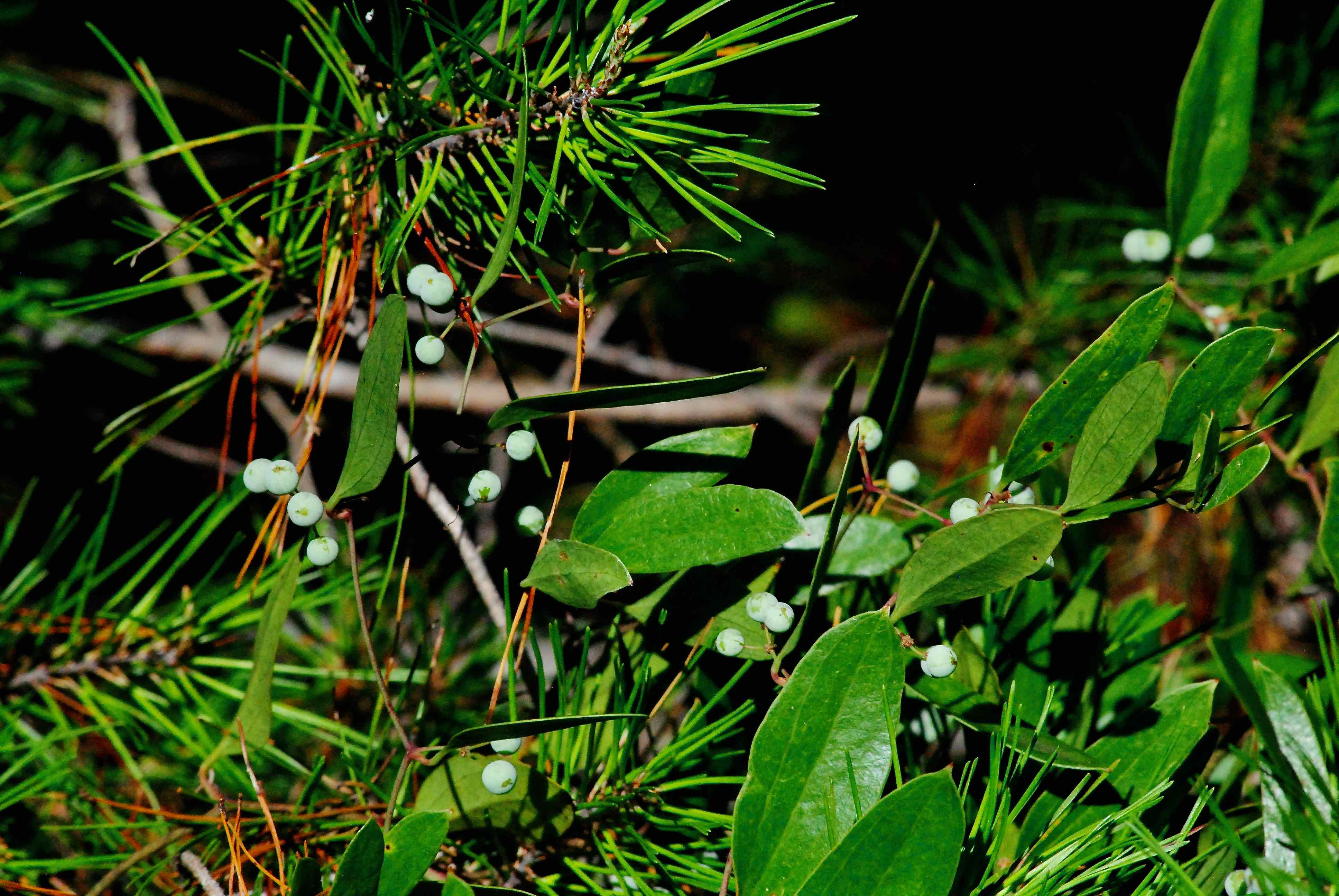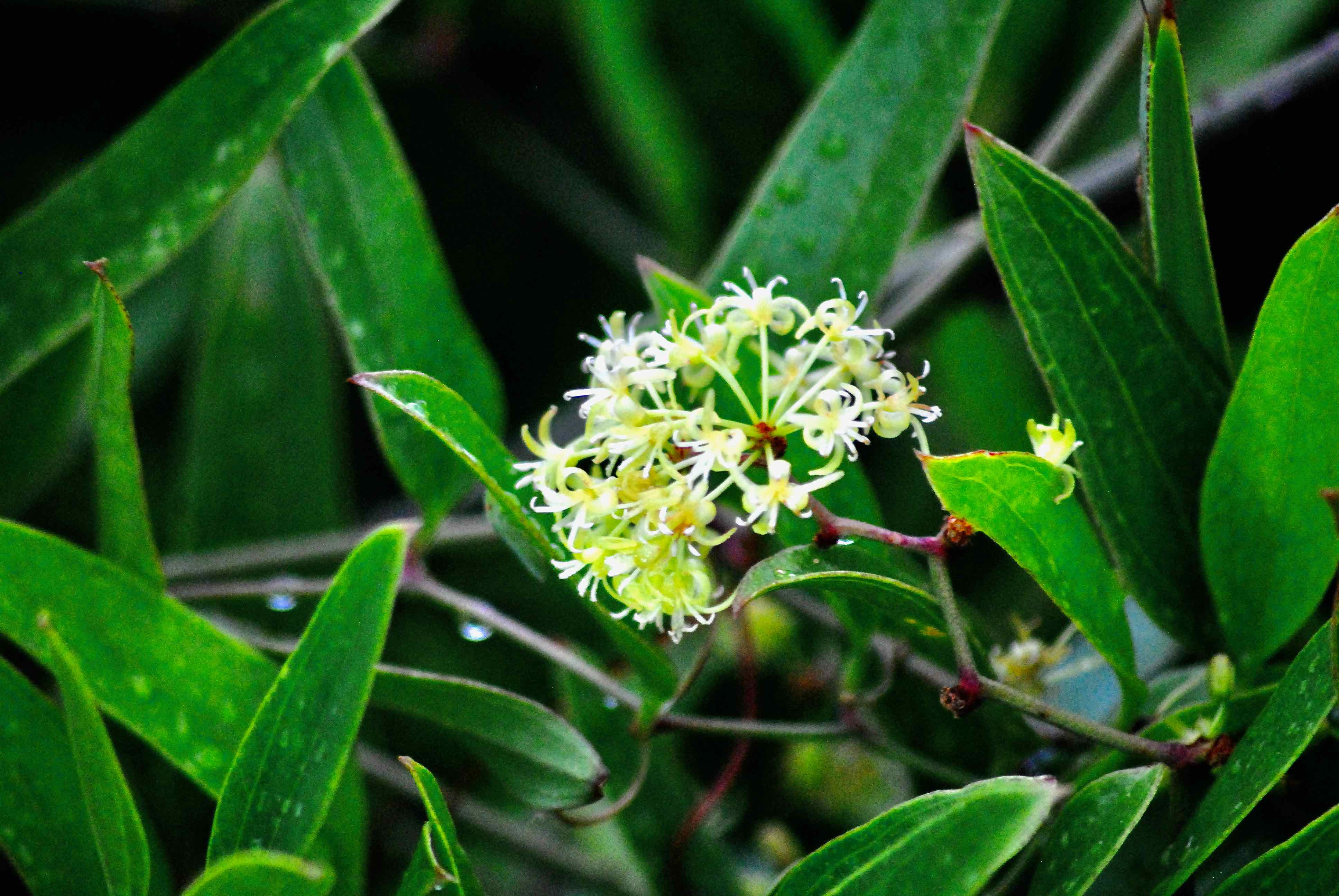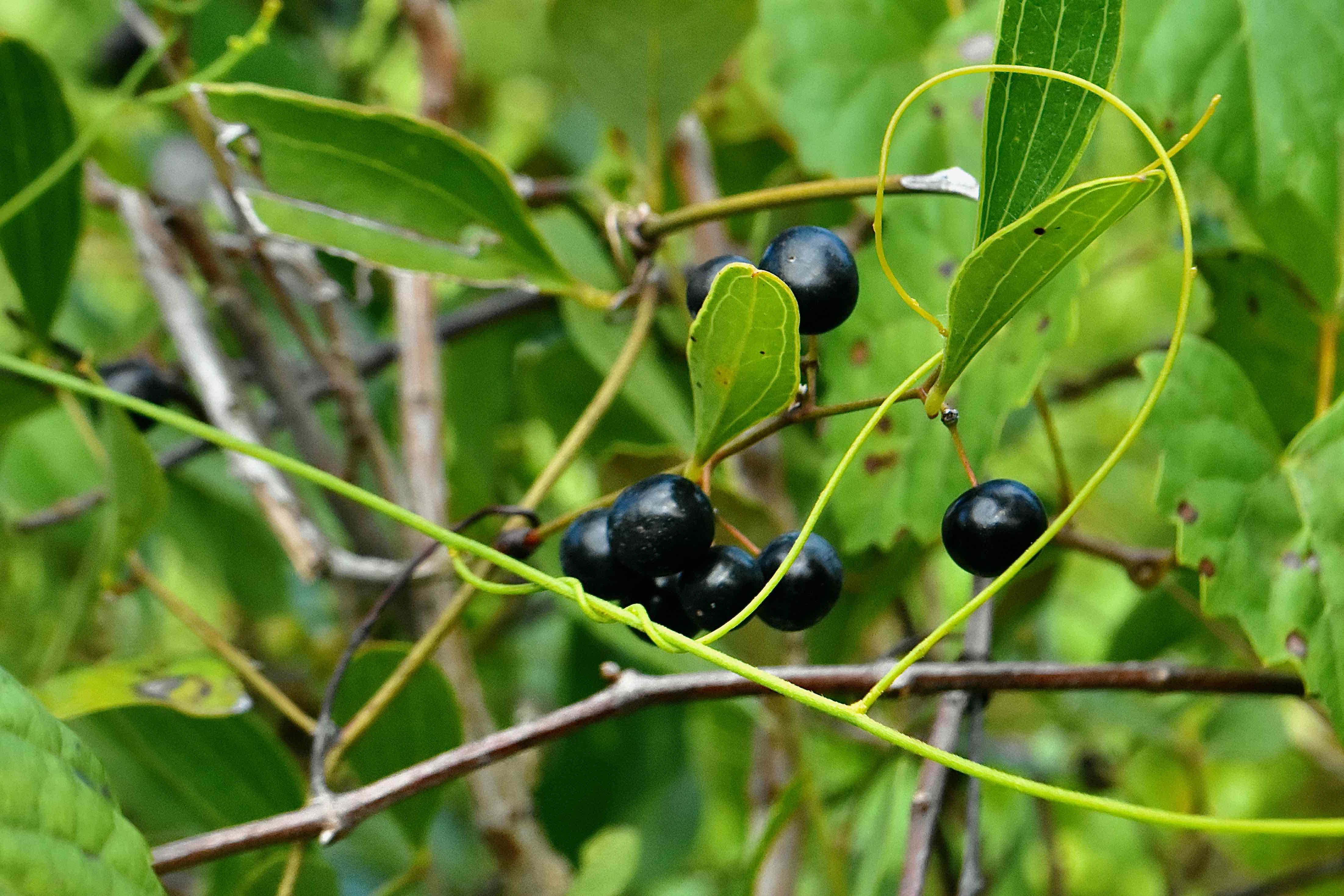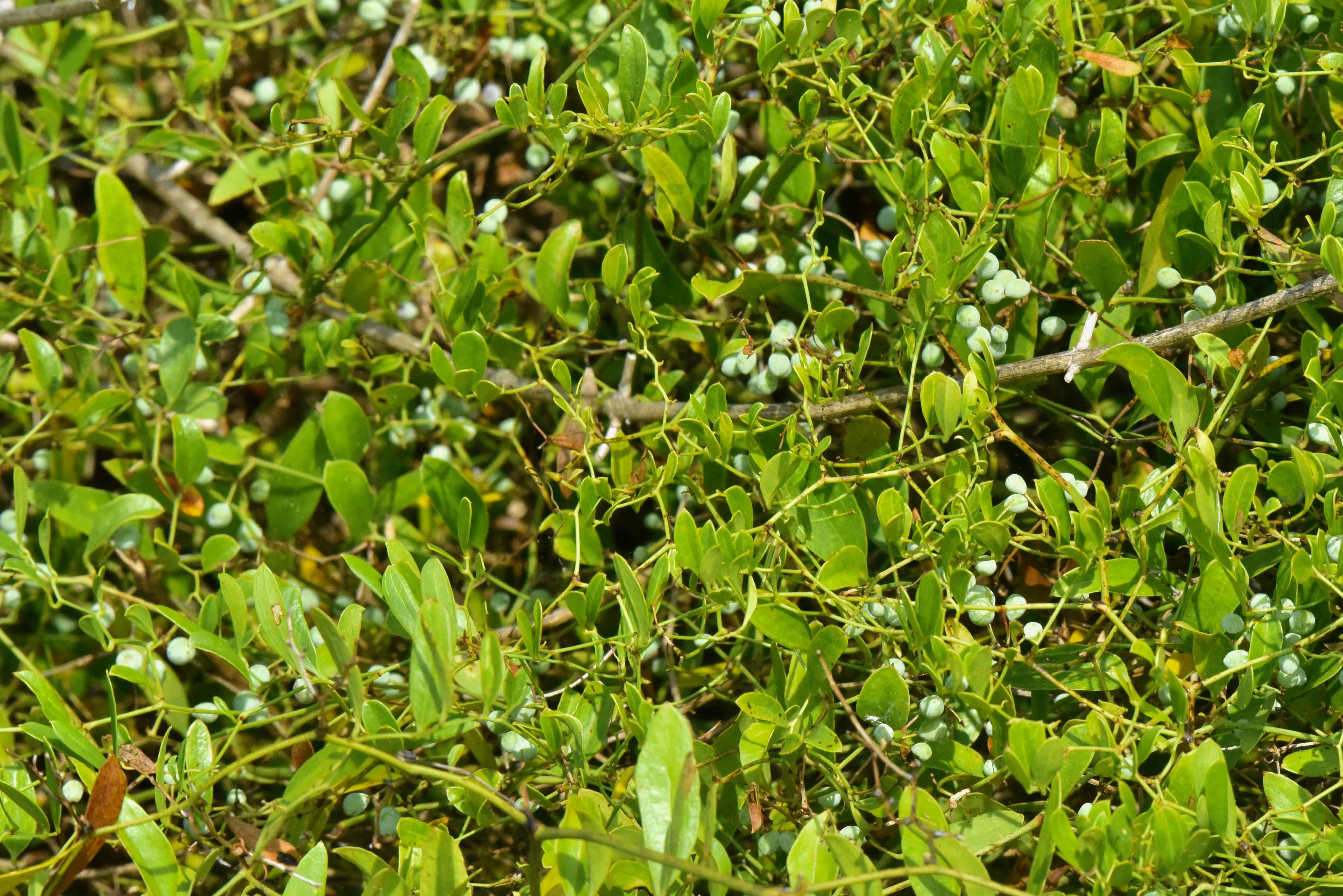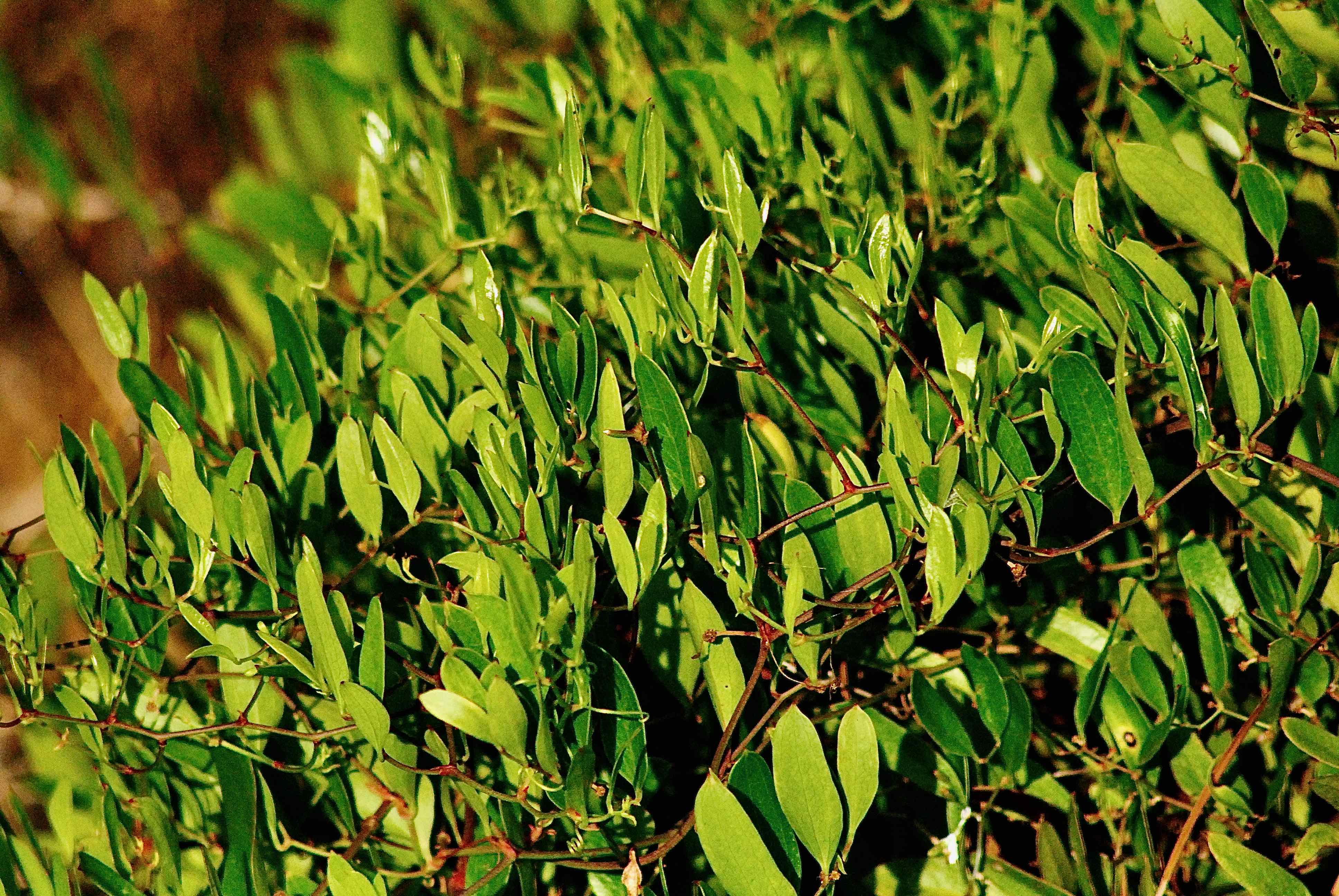
Earleaf greenbrier, photographed at Seacrest Scrub Natural Area, Boynton Beach, Palm Beach County, in April 2014.
Of the many plant families found in the wilds of South Florida, greenbriers are among the most common. And probably the one species of greenbrier most commonly encountered is this guy, earleaf greenbrier, aka Smilax auriculata.
According to the University of Florida, there are 12 greenbrier species (genus Smilax) found in the Sunshine State, six of which are found in South Florida, according to the Institute for Regional Conservation.
Some are rare; some have limited ranges. Earleaf greenbrier, however, is found in all of Florida’s 67 counties. It is not found in the Keys, however.
Its natural range extends up the Atlantic coastal plain to parts of North Carolina and west along the Gulf to Louisiana. It’s also found in one county (Montgomery) in Arkansas.
Like most greenbriers, earleaf greenbrier is a woody vine that clambers over its neighbors. It grows in a zig-zag pattern, potentially reaching lengths of 30 feet or more, well-armed with sharp prickles.
The leaves are highly variable in shape — oblong, oval, lance-like, T or fiddle-like. Leaves have three prominent veins; secondary veins can be prominent or obscure. Because the leaves are so variable, you can’t really key on their shape to identify earleaf greenbrier.
One fairly reliable key is habitat, however. If you find a greenbrier growing in a dry place, it’s most likely our guy, earleaf greenbrier. For other keys on identifying earleaf greenbrier and its cousin, check out this page from the University of Florida..
Other botanical basics: Earleaf greenbrier produces flowers in clusters called umbels. The flowers are small and greenish white and in northern reaches of earleaf greenbrier’s range they bloom late spring into mid-summer. Down south, earleaf greenbrier blooms year round.
The flowers give way to small, green pea-shaped, pea-sized berries that eventually turn dark purple to black when ripe.
Earleaf greenbrier spreads via underground runners called rhizomes. It also produces dense tuber-like masses.
The Seminoles used the buds and leaves to make an infusion to treat chronic conditions.
Other common names include wild bamboo and dune greenbrier. Earleaf greenbrier is a member of Smilaceae, the greenbrier family.
Seacrest Scrub Natural Area

